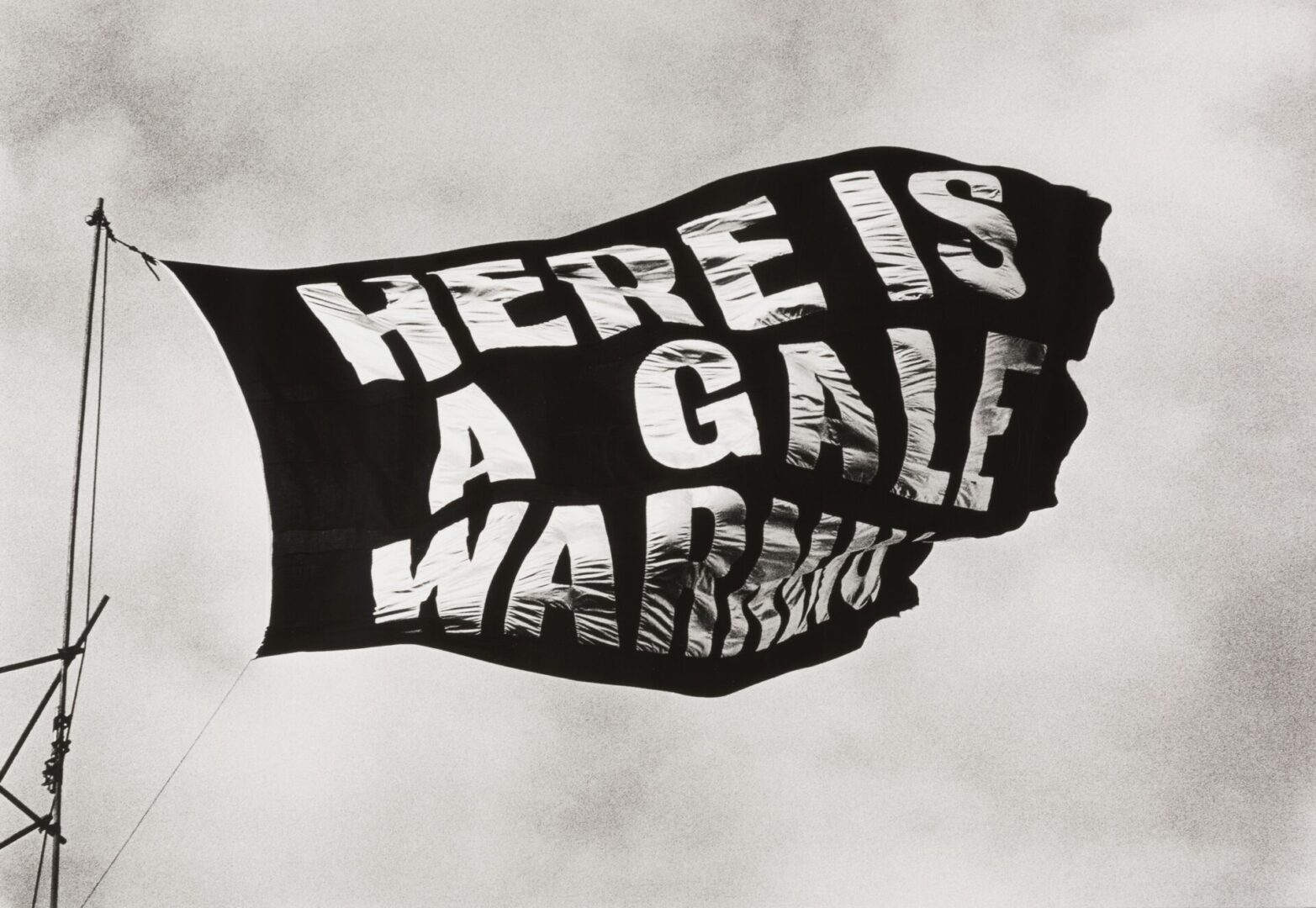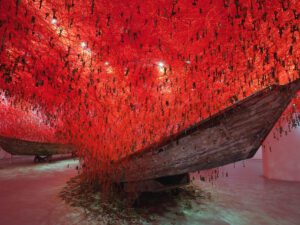In 1971, artist Rose Finn-Kelcey (1945-2014) installed a hand-sewn flag above Alexandra Palace. It held a matter-of-fact statement in block capitals: Here Is a Gale Warning. The piece broadcasted an undisclosed emergency that was already in progress, alerting audiences to the fact that a state of perpetual crisis nonetheless demands vigilant attention. More than 50 years on, the world has lived through a pandemic, experienced increasing natural disasters caused by climate change, as well as brutal international conflicts. Constant barrages of news updates and real-time social media posts mean people have unprecedented exposure to these events. Yet, increased access has paradoxically resulted in “media fatigue”. A recent study from Reuters Institute suggested a growing ambivalence to long-running news stories, with “high interest” in current affairs in the UK dropping from 70% in 2015 to 38% in 2024. Clearly, Finn-Kelcey’s work is more relevant than ever. A new exhibition at Kettle’s Yard takes its name from the iconic work. Here is a Gale Warning: Art, Crisis & Survival explores the capacity of artworks to both warn us of political, social and ecological upheaval, and serve as a source of replenishment.
The landmark show gathers sculpture, painting, photography and moving image. The exhibiting artists include Cecilia Vicuña, known for knotted installations that address ecological destruction, human rights and cultural homogenisation; Pia Arke, known for landscape photographs that map the complex relations between Denmark and Greenland; and Candace Hill-Montgomery, whose decades-long career has covered topics including racism, poverty and feminism. In bringing together practitioners who operate in different media and distinct contexts, the exhibition finds points of connection and solidarity across generations, movements and nations.
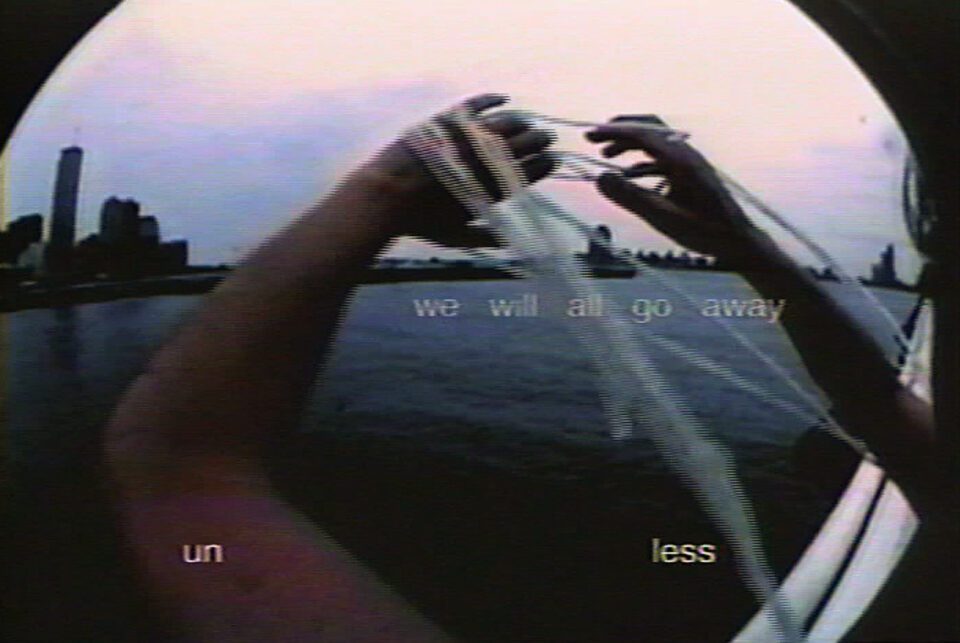
The show opens with Finn-Kelcey’s eponymous flag, before giving way to a presentation by Hill-Montgomery, which was specially conceived for Kettle’s Yard. The display weaves together 50 years of artistic practice, highlighting her enduring dedication to challenging social injustices. It includes a large-scale drawing based on the artist’s 1980 memorialisation of the assassinated Black Panther Fred Hampton. The activist was killed by law enforcement in 1969 after the FBI identified him as a radical threat. Hill-Montgomery’s oeuvre is brought up to date with more recent multimedia weavings, that are based on incidents taken from the news cycle.
Hill-Montgomery’s commitment to activism is mirrored in Tomashi Jackson’s wall-based works, which summon solidarities across time and place. The artist draws upon the targeted racialised raids by the Los Angeles Police Department, as well as the New Cross fire of 1981. The blaze at a party in south-east London killed 13 Black people aged between 14 and 21 and is believed to have been started deliberately. In the face of state neglect and unimaginable trauma, Jackson proposes that community is a buffer against crisis. Elsewhere, Tarek Lakhrissi’s Unfinished Sentence I (2019) presents a speculative counternarrative of queer rebellion and resilience. Inspired by Monique Wittig’s lesbian epic Les Guérillères (1969), which tells of a battle of the sexes where women “engage in bloody, victorious battles using knives, machine guns and rocket launchers,” Lakhrissi refashions metal spears into curling vines.
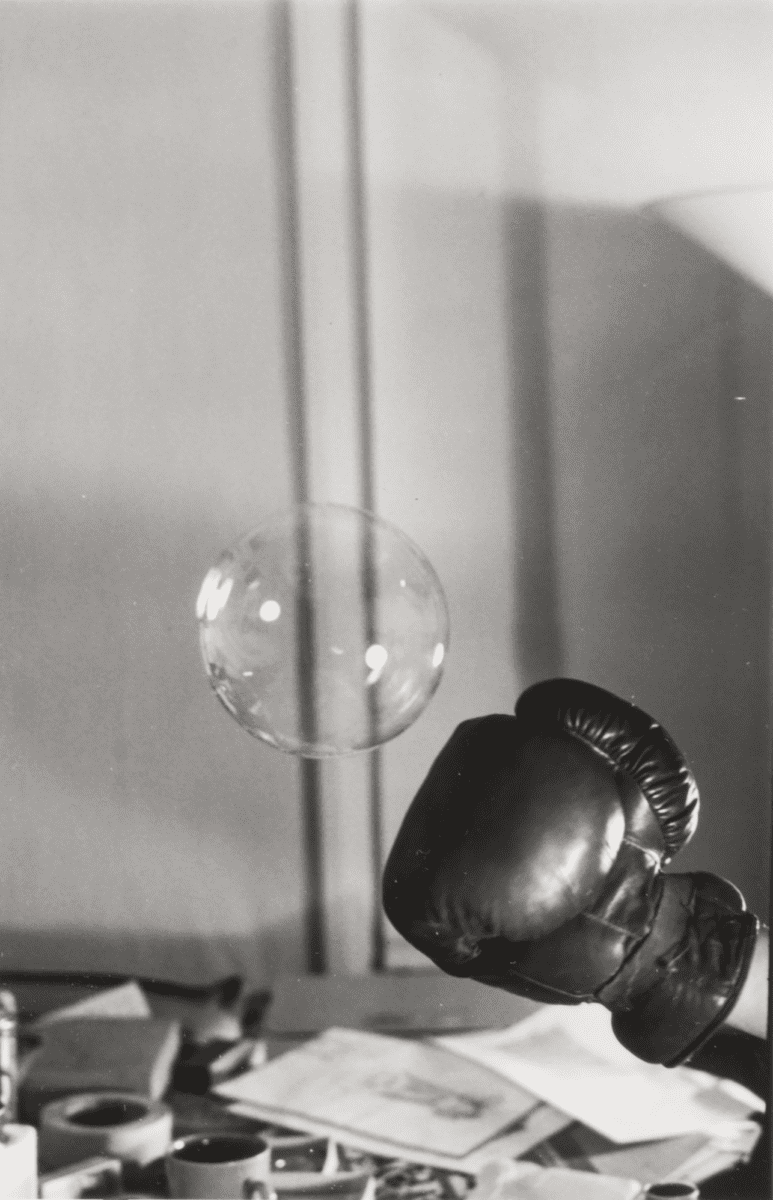
Vicuña and Arke, meanwhile, tell stories of Indigenous history, rights and traditions. Vicuña’s film Cloud-Net (1999) shows the artist weaving a quipu – an Andean knotted device used for the transmission of information – around the supports of Brooklyn Bridge in New York. The process reinscribes the built, urban environment with systems of knowledge lost to colonialism. Arke’s Untitled (Torn, reassembled, and annotated camera obscuraphotostat) (1993) runs parallel to this. Here, a ripped-up image of Nuugaarsuk Point in Greenland, home to Inuit Thule, is juxtaposed with Danish translations of exinct East Greenlandic songs of struggles and resistance. It is part of a deeply personal oeuvre, in which Arke often used nude self-portraits and writings to reexamine the history of Denmark’s repressive colonisation. In Stories from Scoresbysund: Photographs, Colonisation and Mapping (2003), the artist wrote: “I make the history of colonialism part of my history in the only way I know, namely by taking it personally.”
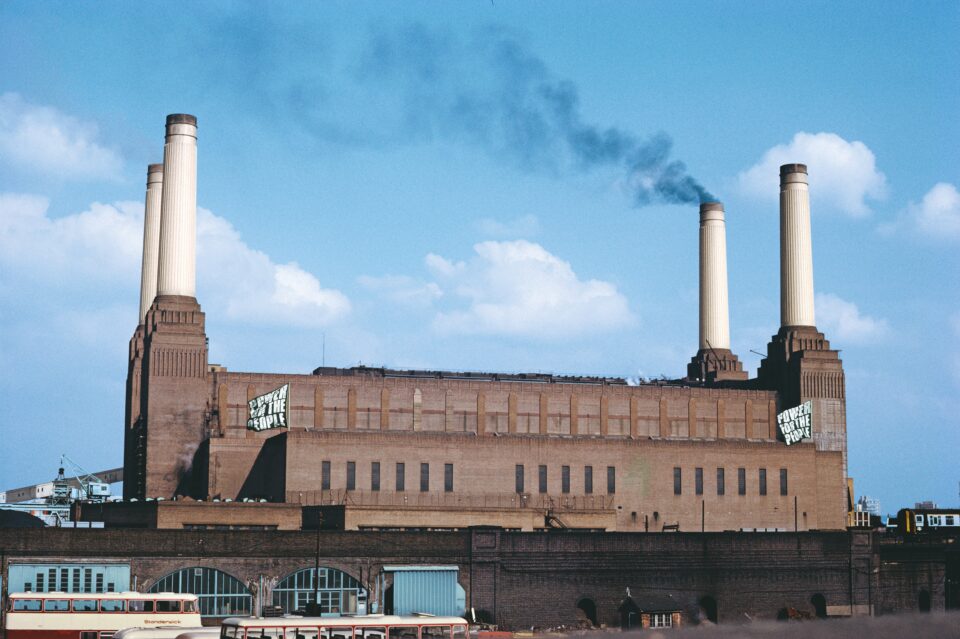
Audiences will see Anne Tallentire’s Interspacing series (2018), which uses the living spaces afforded to prisoners as architectural models. Fabricated from rudimentary materials, including tape and construction supplies, these works measure both the limits of a cell and, through Tallentire’s reassembling, imagines new structures within utilitarian contexts. Also on display is a newly commissioned large-scale drawing by Tallentire, which sees a return to the artist’s longstanding interest in social housing. The works engage Cambridge’s social housing developments during the same period.
Here is a Gale Warning’s scope is awe-inspiring. The exhibition brings together artists who work in vastly different spheres and unites them in a common goal: to warn of upheaval, acknowledge wrongdoing and present a more hopeful alternative. Audiences are guided through the most pressing issues of our time, including ecological breakdown, racialised violence and colonial displacement, engaging with practitioners who offer a new perspective on these era-defining problems. These artists may attest to a broken world, but they also work to heal, mend and imagine new possibilities for survival.
Here is a Gale Warning is at Kettle’s Yard until 29 June: kettlesyard.cam.ac.uk
Words: Emma Jacob
Image Credits:
Rose Finn-Kelcey, Here is a Gale Warning, 1971 / 2011 Silver gelatin print mounted on foam board 46 x 70cm © Estate of Rose Finn-Kelcey. Courtesy the Estate and Kate MacGarry, London.
Cecilia Vicuña, cloud-net, 1999, Still from video documentation of a performance, Courtesy of the artist and Electronic Arts Intermix (EAI), New York
Rose Finn-Kelcey Untitled: Boxing Glove and Bubble #1, c. 1970 / 2019 Archival fibre print 11.5 x 8cm©Estate of Rose Finn-Kelcey. Courtesy the Estate and Kate MacGarry, London.
Rose Finn-Kelcey, Power for the People, 1972/2011, Colour photograph mounted on aluminium © Estate of Rose Finn-Kelcey. Courtesy the Estate and Kate MacGarry, London


